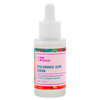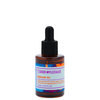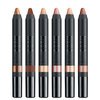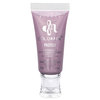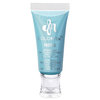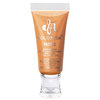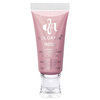When we press play on the latest makeup tutorial or eye liner how-to, the last thing we expect is a moral at the end of the story. Yet as of late, ad agencies have tapped into the makeup medium as a way to call attention to deeper public issues.
A Crash Course to Shine
Take for example, the case of 17-year old Dutch makeup artist Nikkie de Jager, (known by her YouTube moniker as NikkieTutorials). The young video artist, who has over 190,000 subscribers and over 30,000,000 video views, was tapped last April by Berlin-based agency DDB Tribal to star in Volkswagen's newest campaign against applying makeup while driving—aptly titled A Crash Course to Shine. “Most people don’t know that every year in England alone, more than 500,000 traffic accidents are caused by women applying makeup,” says DBB Tribal’s creative team. “By using makeup tutorials as a platform for our message, we addressed our narrow target group directly in terms of age and interest without any detour or losses on the way.”
In the minute-long clip, Nikkie shows fans how to apply rhinestones to her eyes in her room, then is abruptly catapulted forward in what seems (and sounds) like a deadly car crash. “We chose the rhinestones because they visually made the best impact flying straight towards the camera,” says DDB Tribal. They came up with the copy, A Crash Course to Shine, afterwards. “To be quite honest, I didn't know that so many women died because of applying makeup while driving,” Nikkie tells Beautylish. “As a makeup artist and beauty guru on YouTube, I was shocked. Here I am, teaching people how to do makeup on themselves, and not once did it cross my mind that some girls would try some of my tips behind the wheel.” When Nikkie was approached with the opportunity, she knew it was her job to take it. The car crash simulation took nine attempts to perfect.
Most recently, Lauren Luke was recruited by London agency BBH and the charity Refuge to participate in raising awareness for a taboo issue widely glossed over: Domestic abuse. Inevitably, makeup has a link to the matter—cover-up sometimes disguises bruises in addition to blemishes. The clip, entitled How to Look Your Best the Morning After, was designed for shock value, as Lauren calmly—almost cheerfully—covers her sore bruises with the mastery of a makeup pro.
A Lesson in Covering Up
According to BBH, over half of girls ages 13 to 18 have experienced some sort of sexual violence and considered it normal, and 40% of teenage girls would consider giving a boyfriend a second chance if he hit them. That’s why they teamed up with Lauren, a YouTube artist with a younger, more communicative fan base. “We wanted to make sharing and commentary the call to action, because sharing is how teens conduct public debate,” BBH shared on their blog. “It allows them to make a stand without exposing their own opinions and be part of something with a low risk of emotional or social damage. Viral behavior is their version of the town square, the salon or the pub.”
And now, the true power of the viral video. Without a cent spent on media, A Crash Course to Shine accumulated over 1.3 million views, over 8,000 likes, thousands of re-tweets, and massive blog coverage. How to Look Your Best the Morning After has racked up over 895,000 views in its one and a half month life. Most importantly, the videos have sparked debate about whether life is worth risking—even for makeup, and why domestic violence needs a new public discourse, not some cover-up.
Like it or not, social media has become an integral tool for both consumers and advertisers looking to spread a message—and beauty, eye shadow and lipstick aside, seems a natural fit. “We think the future of advertising is the same as the future of social media,” says DDB Tribal. “You have to be relevant and entertaining if you want your message to be spread. Only if these two parameters are fulfilled, will people start to interact with the content—branded or not. You have to tell stories to get viral, to make people share it—online and offline. This is what we call social creativity.”
You Might Also Like
-
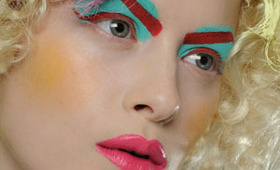
Fashion Week News
Meadham Kirchhoff Makeup, London Fashion Week S/S 2012
- 5
-
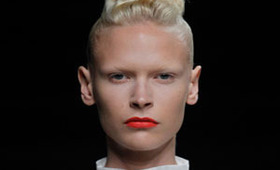
Fashion Week News
Rick Owens Makeup, Paris Fashion Week S/S 2012
- 5
-

Fashion Week News
Céline Hair, Paris Fashion Week S/S 2012
- 4
-
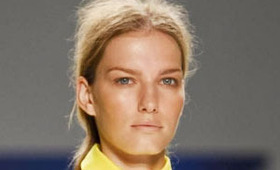
Fashion Week News
Vera Wang Makeup, New York Fashion Week S/S 2012
- 1
-
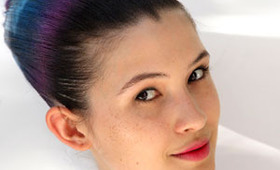
Fashion Week News
Issey Miyake Makeup, Paris Fashion Week S/S 2012
- 2
-
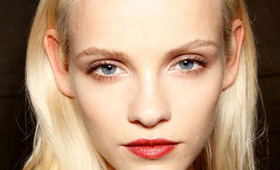
Fashion Week News
Loewe Hair, Paris Fashion Week S/S 2012
- 3
-

Fashion Week News
Betsey Johnson Hair, New York Fashion Week S/S 2012
- 9
-

Fashion Week News
Altuzarra Beauty, New York Fashion Week S/S 2012
- 4






